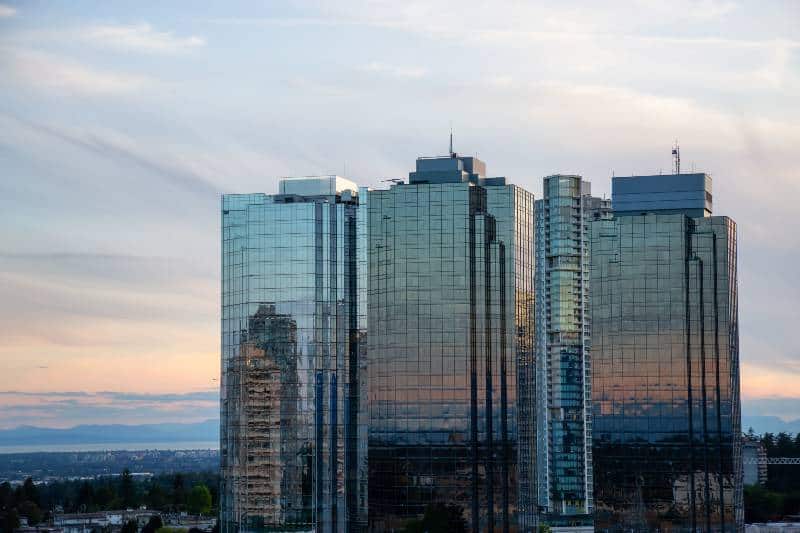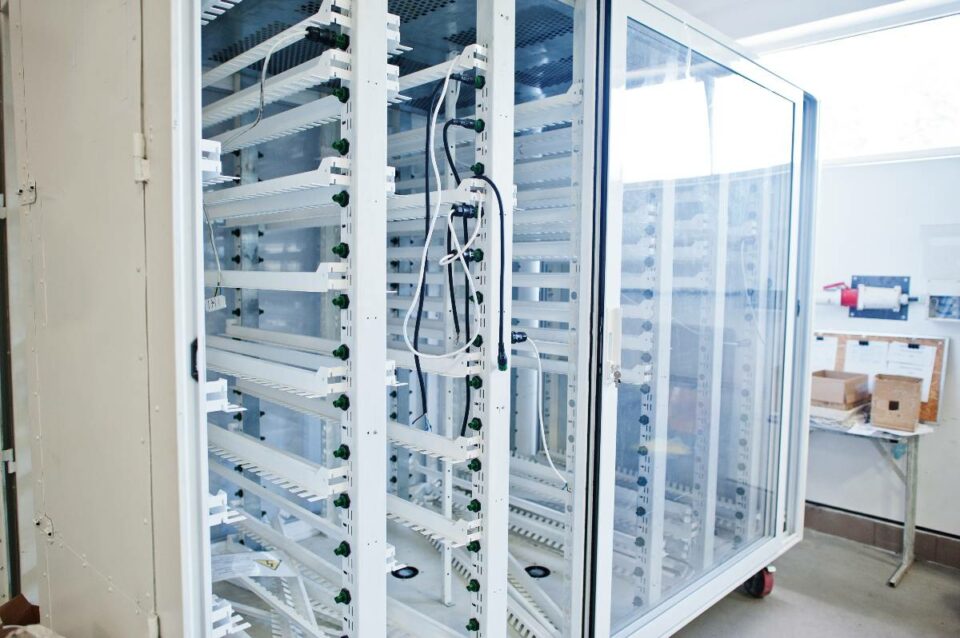Los Angeles isn’t just one market—it’s dozens. The commercial real estate landscape shifts dramatically from one neighborhood to the next, and what works on Colorado Boulevard in Eagle Rock won’t necessarily fly on Whittier Boulevard in East LA. Over my 18 years working with landlords across LA County, I’ve seen deals collapse because owners didn’t understand the granular details of their specific market. This guide breaks down what you actually need to know about LA commercial real estate by neighborhood, from zoning quirks to tenant preferences, so you can make informed decisions that protect your investment and maximize returns.
Key Takeaways
- Each LA neighborhood has unique zoning regulations, parking requirements, and market dynamics that directly impact commercial property values and tenant demand
- Understanding specific plan areas, conditional use permits, and local board review processes can save landlords months of delays and thousands in unexpected costs
- High-demand markets like Downtown LA and Inglewood offer strong leasing opportunities, while emerging areas like Highland Park present calculated risks with potential upside
Table of Contents
- Understanding LA’s Commercial Real Estate Landscape
- Eagle Rock & Colorado Boulevard: Navigating the Specific Plan
- Commerce Zoning Nightmares: CUPs, Variances & Board Reviews
- East LA Parking Challenges on Whittier Boulevard
- Highland Park & South LA: Market Opportunities vs. Risks
- Downtown LA & Inglewood: High-Demand Leasing Strategies
- Market Research and Setting Competitive Lease Rates
- Tenant Selection and Long-Term Success
- FAQs
- Conclusion
Understanding LA’s Commercial Real Estate Landscape

Los Angeles County spans over 4,700 square miles with 88 incorporated cities, each with its own zoning codes, development standards, and market characteristics. For landlords, this complexity means success depends on local knowledge, not just broad market trends.
The Geographic Diversity Factor
Commercial properties for sale in LA range from industrial warehouses in Commerce to boutique retail spaces in Silver Lake, from multi-family developments in Koreatown to corporate office buildings in Century City. The available inventory varies wildly by neighborhood, and so do the opportunities.
Property values don’t follow a simple gradient from downtown outward. A 5,000 sq ft retail space on Melrose might command three times the lease rate of a similar property just two miles away. Understanding these micro-markets is essential for landlords evaluating potential acquisitions or trying to position existing properties competitively.
When you search available commercial real estate listings, filtering by use type and location reveals patterns that aren’t obvious from citywide data. Industrial land in Vernon commands different pricing than mixed-use development sites in Hollywood. Each market segment performs differently across neighborhoods, and successful landlords understand these distinctions.
Eagle Rock & Colorado Boulevard: Navigating the Specific Plan
Eagle Rock represents one of LA’s most interesting case studies in neighborhood-specific commercial regulation. Colorado Boulevard, the main commercial corridor, falls under the Colorado Boulevard Specific Plan, which imposes design standards and use restrictions that don’t apply just blocks away.
What the Specific Plan Actually Means for Landlords
The Colorado Boulevard Specific Plan was adopted to preserve the boulevard’s character while encouraging appropriate development. For landlords, this translates to additional review processes for façade modifications, signage, and tenant improvements. Unlike properties in areas without specific plans, you can’t simply pull a building permit for standard renovations—your plans need to demonstrate compliance with design guidelines.
I’ve worked with landlords who purchased commercial property on Colorado Boulevard without understanding these requirements. What should have been a three-month tenant improvement project stretched to eight months because of additional design review iterations. The financial impact was significant: holding costs accumulated while the property sat vacant, and the prospective tenant nearly walked away.
Permitted Uses and Tenant Considerations
The Specific Plan limits certain use categories that might be permitted elsewhere in the city. Fast-food establishments face stricter standards. Drive-through configurations require conditional approval. For landlords marketing space for lease, this means carefully vetting potential tenants against allowed uses before signing letters of intent.
The tenant mix on Colorado Boulevard skews toward local businesses, restaurants, and service providers. National chains have a presence, but the development standards and community preferences favor independent operators. When positioning your property, emphasize walkability, parking access, and proximity to residential density—factors that matter to the businesses that thrive here.
Parking Requirements and Workarounds
Eagle Rock’s parking requirements can make or break deals. The standard commercial ratio is often 1 space per 250-300 sq ft of retail space, but achieving this ratio is difficult on smaller parcels with existing buildings. Some landlords have successfully negotiated in-lieu parking fees or shared parking agreements with adjacent property owners. Understanding these options before listing commercial properties for sale prevents surprises during escrow.
[Interactive Ideas: downloadable PDF checklist of design review requirements]
Commerce Zoning Nightmares: CUPs, Variances & Board Reviews
The City of Commerce presents unique challenges that even experienced landlords underestimate. This small industrial city has strict zoning enforcement and a planning commission that takes an active role in reviewing projects.
When You Need a Conditional Use Permit
Conditional Use Permits (CUPs) are required in Commerce for uses that fall outside standard zoning allowances but might be appropriate with conditions. Common triggers include warehouses with certain types of storage, facilities handling hazardous materials, and operations with extended hours or truck traffic.
The CUP process in Commerce typically takes 3-6 months and requires a public hearing. Applications need detailed operational plans, traffic studies, and sometimes environmental review. For landlords with tenants waiting to take occupancy, this timeline can derail deals. I always advise clients to identify CUP requirements early—ideally during due diligence if you’re acquiring commercial real estate for sale—so you can build realistic timelines and contingencies into lease agreements.
The Variance Process: When Standard Rules Don’t Fit
Variances allow deviations from zoning standards when strict application creates practical difficulties. In Commerce, landlords most commonly need variances for setback reductions, parking count adjustments, or height modifications. The variance process requires demonstrating that unusual site characteristics justify the deviation and that the variance won’t harm neighboring properties.
Commerce’s planning commission scrutinizes variance applications closely. I’ve seen seemingly straightforward requests—a 10% parking reduction on a constrained industrial lot—debated for months. Success requires thorough documentation: surveys showing physical constraints, parking studies demonstrating actual demand, letters from neighbors, and sometimes traffic engineering reports.
Board Review Strategies That Actually Work
When your project goes before Commerce’s planning commission or city council, preparation matters. Engage with planning staff early through informal pre-application meetings to understand staff concerns before submitting formal applications. Staff recommendations carry significant weight with commissioners.
Address neighborhood concerns proactively. If your industrial tenant will generate truck traffic, reach out to nearby property owners before the hearing. Documented outreach and responsive adjustments demonstrate good faith.
Commerce values job creation, tax revenue, and responsible industrial operations. Frame your project in terms of these priorities rather than just property rights, and consider hiring local consultants who understand the city’s specific concerns.
[Interactive Ideas: calculator estimating total process timeline and costs based on project type]
East LA Parking Challenges on Whittier Boulevard
Whittier Boulevard runs through the heart of East LA, serving as both a commercial corridor and a cultural landmark. For landlords, parking represents the single biggest operational challenge on this corridor.
Why Parking Is Different on Whittier Boulevard
Unlike newer commercial developments built with ample parking, many Whittier Boulevard properties date to eras with minimal parking requirements. Retail spaces often have 5-10 spaces for buildings that current codes would require 30-40 spaces to serve. This mismatch creates constant tension between code compliance, tenant operations, and customer access.
When I work with landlords purchasing commercial property on Whittier Boulevard, parking due diligence goes beyond counting striped spaces. We investigate whether the property has legal non-conforming status (grandfathered under old standards) or if previous owners secured variances. We also assess street parking availability and enforcement patterns, since many businesses rely heavily on street parking for customers.
Tenant Types That Work with Limited Parking
Certain business models function successfully with minimal parking. Service businesses with appointment-based traffic (salons, insurance offices, tax preparers) generate less parking demand than retail. Restaurants with strong takeout/delivery components can operate with fewer customer parking spaces. When marketing space for lease on Whittier Boulevard, targeting these tenant categories increases your chances of successful occupancy without parking conflicts.
Creative Solutions for Parking-Constrained Properties
Landlords have several options for addressing parking shortages. Shared parking agreements with adjacent properties work particularly well when your tenant operates during hours the adjacent property is closed. Some higher-end restaurants employ valet services, using remote lots and shuttling cars to increase effective parking capacity. Certain areas allow payment of in-lieu fees rather than providing physical parking spaces—check with the planning department whether this option exists for your property.
[Interactive Ideas: map overlay showing street parking availability and enforcement zones]
Highland Park & South LA: Market Opportunities vs. Risks
Highland Park and South LA represent different ends of LA’s investment spectrum, yet both present compelling opportunities for landlords willing to understand the market dynamics.
Highland Park’s Transformation and Investment Thesis
Highland Park has evolved from an overlooked neighborhood to one of LA’s trendiest markets. Figueroa Street and York Boulevard now host craft coffee shops, boutique retail, and creative office tenants. For landlords, this transformation created substantial appreciation for commercial properties.
The investment case centers on demographic shifts. Young professionals priced out of Silver Lake and Echo Park discovered Highland Park’s walkable commercial corridors, historic architecture, and transit access via the Gold Line. This population brings spending power and preferences that favor local, independent businesses.
When evaluating commercial real estate for sale in Highland Park, I focus on properties within a 5-10 minute walk of Gold Line stations. Transit proximity drives foot traffic and makes your property appealing to tenants targeting the neighborhood’s new demographics. Buildings with character—original storefronts, exposed brick, high ceilings—command premium lease rates because they match tenant aesthetic preferences.
The Risk Side: Understanding Community Dynamics
Highland Park’s growth hasn’t been frictionless. Longtime residents and businesses face displacement pressure as rents rise. Landlords occasionally encounter organized resistance from community groups opposing certain development or tenant types.
The key is approaching development and leasing thoughtfully. Properties that contribute to neighborhood vitality—spaces leased to businesses serving diverse income levels, projects that preserve historic character—tend to integrate successfully and avoid significant opposition.
South LA: Emerging Opportunity with Infrastructure Challenges
South LA presents a different profile: undervalued commercial real estate in an area with strong fundamentals (population density, transit access, pent-up retail demand) but also infrastructure challenges and higher operational complexity.
Commercial property values in South LA remain significantly below Westside or even Downtown LA equivalents. For landlords with longer time horizons, this valuation gap represents opportunity. As LA’s housing crisis forces population dispersal, South LA’s centrality and relative affordability position it for continued growth.
The challenges are real. Some corridors suffer from deferred maintenance on public infrastructure. Tenant improvement costs can be higher if buildings require extensive work to meet modern standards. Successful South LA commercial real estate investment requires local expertise and appropriate tenant matching. National credit tenants are expanding into South LA markets—validating the market’s trajectory and creating opportunities for landlords with local knowledge.
[Interactive Ideas: demographic trend graphs showing income and education shifts]
Downtown LA & Inglewood: High-Demand Leasing Strategies
Downtown LA and Inglewood represent LA’s highest-demand commercial markets, each for different reasons. These markets offer strong fundamentals but require sophisticated leasing strategies to capture maximum value.
Downtown LA’s Multi-Layered Market
Downtown LA isn’t monolithic—it contains distinct submarkets with different tenant profiles and lease economics. The Arts District attracts creative office and retail tenants seeking converted warehouse space. The Financial District caters to professional services and corporate tenants. The Historic Core has become residential with ground-floor retail.
For landlords with commercial property in Downtown LA, matching your leasing strategy to your specific location is essential. Arts District tenants prioritize open layouts, exposed structure, and design flexibility. Financial District tenants want efficient floor plates, parking access, and proximity to courthouses. Historic Core retail tenants need alignment with residential density and pedestrian patterns.
Lease structures also vary. Creative office tenants often negotiate longer-term leases (7-10 years) with significant tenant improvement allowances. Retail tenants in high-foot-traffic locations might accept higher base rents with percentage rent provisions. Understanding comps for your specific submarket prevents leaving money on the table.
Parking and Access Considerations
Downtown LA benefits from transit access but parking remains crucial for most commercial tenants. Properties with dedicated parking—whether surface lots or parking structures—command significant premiums. When marketing commercial properties for sale or lease in Downtown LA, quantify parking ratios explicitly.
For properties without adequate parking, proximity to public parking structures or Metro stations partially mitigates the issue. Some landlords negotiate parking arrangements with nearby lots, bundling parking into lease packages.
Inglewood’s Transformation Around SoFi Stadium
Inglewood has experienced unprecedented commercial real estate growth driven by SoFi Stadium, the Intuit Dome, and the planned Inglewood Transit Connector. Commercial properties near these developments—particularly along Market Street, Prairie Avenue, and Manchester Boulevard—have seen substantial appreciation.
Tenant demand has increased across categories: restaurants wanting to capture event traffic, retail seeking to serve the area’s growing workforce, and office tenants drawn by improved amenities and transit access. The leasing strategy in Inglewood should account for event-driven traffic patterns. Restaurants and entertainment-oriented businesses can capitalize on 300+ annual events at these venues.
Competing with New Development
Both Downtown LA and Inglewood continue adding new commercial inventory, which affects existing landlords. New buildings offer modern systems, efficient layouts, and Class A finishes. For landlords with older properties, staying competitive requires strategic capital investment.
Assess your position in the competitive set realistically. If your property can’t match new construction on finishes and systems, compete on price and flexibility. Shorter lease terms, lower improvement requirements, or creative deal structures can attract tenants who want good value over premium space. Alternatively, consider repositioning projects that justify higher rents and attract tenants who might otherwise lease new construction.
[Interactive Ideas: lease rate comparison tool Downtown LA vs comparable markets]
Market Research and Setting Competitive Lease Rates
Successful landlords don’t just know their properties—they know their markets. Regular market research informs pricing decisions, identifies emerging opportunities, and helps you anticipate competitive threats.
Finding Accurate Comparable Properties
While online listings provide baseline data, serious market research involves broker relationships for access to CoStar, LoopNet, and proprietary databases with detailed comp information. Physical property tours reveal details online listings miss—which properties have high vacancy, which attract quality tenants, and how landlords position their spaces.
When analyzing comps, adjust for relevant factors: parking availability, frontage and visibility, condition and improvements, lease terms and incentives. A stated lease rate of $3.50 per sq ft with six months free rent isn’t comparable to $3.50 with no concessions.
Identifying Micro-Market Trends
Market trends operate at multiple scales. While LA’s office market overall may be soft, certain neighborhoods maintain strong fundamentals. Track indicators specific to your neighborhood: new business openings, residential development, infrastructure investment, and tenant mix changes. These signals often precede rent growth and help you position your property strategically.
Using Data to Price Properties Competitively
Lease pricing requires balancing multiple factors: market comps, your property’s competitive position, current vacancy rates, and your return requirements. Start with a target rent based on comps, adjusted for your property’s strengths and weaknesses. If you’re not generating strong tenant interest within 30-60 days, your price likely exceeds market clearing rates.
Don’t simply drop price immediately. Consider whether your marketing effectively reaches target tenants, whether lease terms are competitive, and whether modest improvements might justify your pricing.
Tenant Selection and Long-Term Success

Evaluating Tenant Financial Strength
Tenant financial evaluation goes beyond credit scores. Review financial statements, understand cash flow stability, and assess business model viability. For established businesses, look at operating history, existing location performance, and expansion track record. Multi-unit operators expanding successful concepts present lower risk than first-time business owners.
For smaller tenants, requiring principals to personally guarantee lease obligations provides crucial protection if the business fails.
Matching Tenants to Property and Neighborhood
The best tenant isn’t always the one offering the highest rent. A tenant whose business model aligns with your property’s characteristics and neighborhood demographics is more likely to succeed, pay rent consistently, and renew leases.
Consider foot traffic patterns, parking requirements, and compatibility with adjacent tenants. Complementary businesses often benefit each other, while conflicting uses may create friction.
Building Long-Term Tenant Relationships
Tenant retention dramatically impacts landlord returns. Vacancy costs, tenant improvement costs, and leasing commissions for new tenants add up quickly. Retaining good tenants through lease renewals preserves income and reduces turnover expenses.
Invest in tenant relationships before lease expiration approaches. Responsive maintenance, reasonable accommodation of evolving needs, and fair treatment build goodwill that pays dividends during renewal negotiations. Start renewal conversations at least 12 months before expiration for significant tenants.
FAQs
What neighborhoods in LA offer the best returns for commercial property investment?
Returns depend on your strategy and risk tolerance. Downtown LA and Inglewood offer strong income and appreciation but require significant capital. Highland Park provides upside through appreciation with some community dynamics to navigate. South LA offers value plays with longer horizons. The best market aligns your capital and expertise with neighborhood characteristics.
How do parking requirements differ across LA neighborhoods?
Parking requirements vary by city, specific plan, and zoning. Standard retail typically requires 1 space per 250-300 sq ft, but specific plans impose different standards. Many legacy properties have grandfathered non-conforming parking. Always verify requirements with the local planning department during due diligence.
What’s involved in getting a Conditional Use Permit in Los Angeles?
CUP processes take 3-6 months and include application submission, environmental review if required, public hearing, and potential appeals. Applications need operational plans, traffic analysis, and parking management. Costs range from several thousand to tens of thousands depending on complexity.
How should landlords approach lease negotiations in high-demand areas?
Offer flexibility on non-economic terms while preserving financial position. Consider build-out timelines matching tenant needs, early access for improvements, or structured free rent. Percentage rent for retail lets you participate in tenant success. Longer terms with options provide tenant certainty and secure your income stream.
What are the biggest mistakes landlords make when investing in LA commercial real estate?
Common mistakes include inadequate zoning due diligence, underestimating tenant improvement costs and timelines, ignoring neighborhood parking challenges, leasing to poorly-matched tenants, neglecting competitive capital improvements, and pricing based on hope rather than market comps. Thorough research and experienced guidance prevent these issues.
Conclusion
LA’s commercial real estate market rewards landlords who understand neighborhood nuances. Each corridor, each specific plan area, each local market has characteristics that determine what succeeds and what struggles. The investments and leasing strategies that work in one area can fail completely just miles away.
I’ve spent nearly two decades helping landlords navigate these complexities—from zoning challenges in Commerce to parking strategies on Whittier Boulevard to lease negotiations in Downtown LA. If you’re evaluating a commercial property acquisition, facing leasing challenges, or determining the best strategy for your holdings, talk with Tolj Commercial. Schedule a consultation with Tolj Commercial and we’ll discuss how to position your property for success in LA’s dynamic market.




